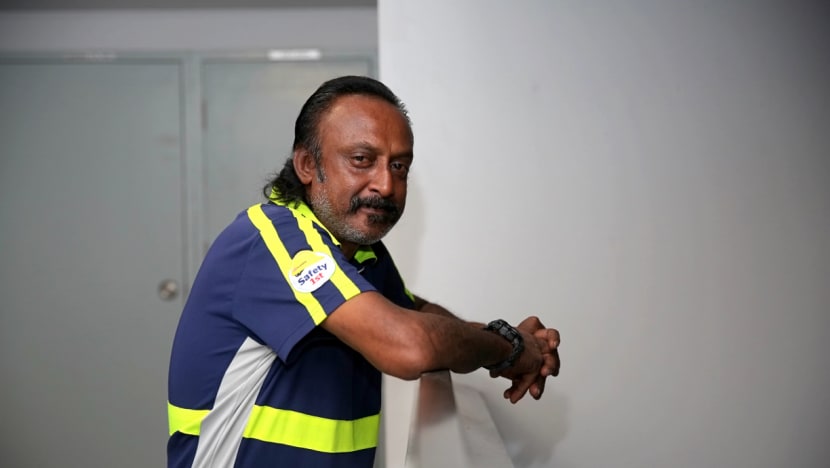More resources to help low-income and vulnerable groups, in steps to address inequality: MSF

Mr HM Ramesh, 50, is among the needy individuals helped by an assistance scheme for low-income and vulnerable Singaporeans provided by the Ministry of Social and Family Development.
SINGAPORE — He lost his job as a driver with a logistics company in 2011 due to drink-driving. A part-time job as a cashier did not pay enough and Mr HM Ramesh drank even more.
A limp in his leg also affected his chances of finding other jobs.
After he approached a Social Service Office in Kreta Ayer for help, he received financial aid for a few months, where he was given up to S$400 a month.
Social workers who worked with him supported him through counselling and now, the 50-year-old has applied for his own public housing unit through the Housing and Development Board (HDB) and will be a homeowner by 2021.
Stress over his finances and job pushed him to indulge in alcohol, but advice from his social service officer helped him to change his lifestyle.
“I listen to them... I try to cut down… Last time, when I had money, I drank, every day drinking. Now, seldom,” Mr Ramesh said.
Through a friend, he managed to find a job in November 2016 as a delivery assistant despatching computer servers to data centres, earning about S$1,600 a month.
Mr Ramesh is among the needy individuals helped by ComCare’s short-to-medium assistance programme, one of the various assistance schemes for low-income and vulnerable Singaporeans provided by the Ministry of Social and Family Development (MSF).
In general, ComCare offers social assistance to low-income individuals and families through the Social Service Offices around the island.
On Thursday (Nov 1), MSF released an occasional paper highlighting the various schemes it provides to help the needy and how their lives have improved as a result.
IMPROVED OUTCOMES
The ministry said that 14.3 per cent of Singaporeans born between 1978 and 1982 in families from the lowest 20 per cent in household income bracket have made it to the highest 20 per cent in household income, indicating that social mobility has improved.
Real income growth has also risen more for the lower-income group. From 2012 to 2017, households in the lower 50 per cent saw a 4.2 to 4.6 per cent growth in real income, compared to the 2.2 to 4.2 per cent growth for the top 50 per cent.
Low-income households were found to be spending less on healthcare, with 5.6 per cent of households in the bottom 20 per cent spending more than 10 per cent of their total expenditure on healthcare. The percentage was double that for households in the top 20 per cent.
A greater number of households have moved out of rental flats to being a homeowner as well, from 500 in 2013 to 1,000 in 2017.
The number of requests for public rental flats has declined by 44 per cent between 2013 and 2017.
In the area of education, nine in 10 students now from the bottom 20 per cent by socio-economic background progressed to post-secondary education, compared with five in 10 students 15 years ago.
Singapore’s Gini coefficient after taxes and transfers — which is a measure of income inequality — has decreased from 0.439 in 2007 to 0.401 in 2017, MSF said in the paper. A lower score indicates lower inequality.
However, it acknowledged that mitigating the income divide and sustaining social mobility will become more challenging as the country’s economy matures.
MORE SUPPORT
Over the decade, social spending as a percentage of gross domestic product increased significantly, from 5.2 per cent (S$14.3 billion) in 2007 to 8.2 per cent (S$36.9 billion) in 2017.
Last year, the Government’s social spending made up half of its total expenditure, it added.
In allocating more resources to the low-income and vulnerable, there are various other schemes besides ComCare to target other needs in the areas of education, employment, healthcare, housing and retirement.
MSF noted that Singapore has made “good progress” but is “not perfect” and needs to do more.
It said that the Government will invest even earlier in the educational journey of children, because it recognises that an individual’s starting point in life may differ, and family resources or disadvantages can be passed on and amplified in the next generation.
Among the various schemes, the authorities are looking to improve the quality of pre-school education by strengthening the career prospects and professional development of early childhood educators.
MSF will also work with other government agencies to strengthen social service delivery. For example, it is making it more convenient for needy families to apply for assistance schemes from various agencies by allowing those who apply for ComCare assistance to be automatically assessed for other relevant schemes and services.
MISSING LINKS
While analysts praised the Government’s efforts thus far in trying to level the playing field, some said that it is not enough. In particular, they pointed out that more help could be provided for seniors.
Associate Professsor Tan Ern Ser, a sociologist from the National University of Singapore, told TODAY: “We should do more to meet the retirement needs of the oldest seniors (aged 75 or older), especially females, who are likely to have low, if any, savings and are very dependent on their “sandwiched generation” adult children, who may not have the capacity to provide for them adequately.”
While economics professor Chew Soon Beng from Nanyang Technological University was impressed with the outcomes achieved in bridging the gap, he said that there is no information on how many in the bottom 20 per cent continue to remain at the bottom.
If a high proportion is still stuck at the bottom 20 per cent, it means that there is a lack of social mobility for that group, Prof Chew said.
Prof Chew also pointed out that the high costs of private tuition could be a factor impeding upward social mobility.
“As long as private tuition is important and the poor cannot afford, the children will suffer,” he added.
Sociology professor Paulin Straughan from the Singapore Management University said that beyond the income divide, the gaps in non-financial resources have to be plugged as well.
“If you are born into a low-income family… you may not have resources at home in terms of your computers, your reference books or even parents who understand the kind of educational issues one has to deal with. Can we create an alternative network for children from low-income family?” she questioned.
“Networks can get you to places,” she said, but people who are less well-off tend to have poorer quality social networks.
“These are things money cannot buy. You have to be in that space. The Government alone cannot address these concerns. It has to be a community issue and effort,” she added.














